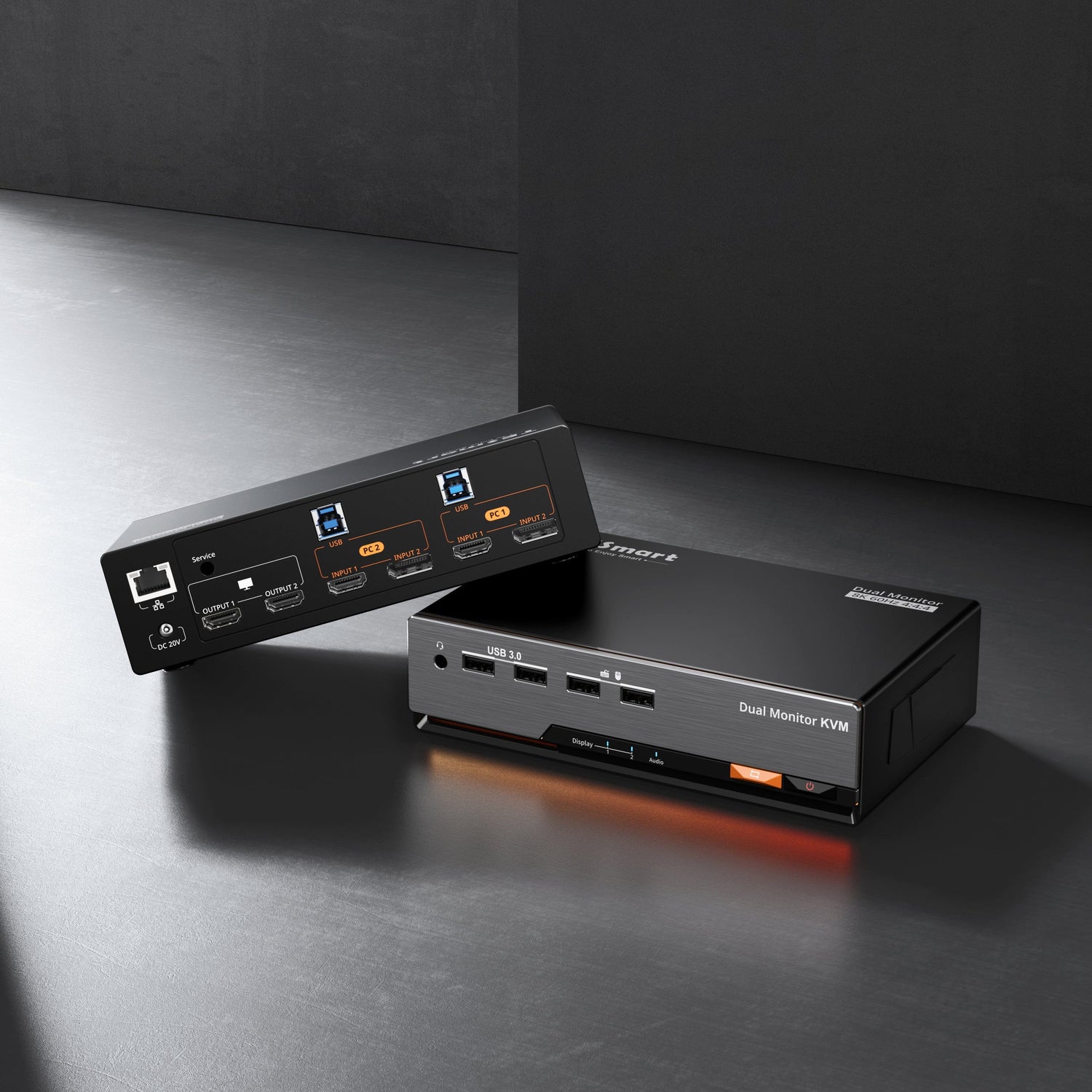Managing multiple computers with dual monitors has become increasingly common—whether you're working across macOS and Windows, separating personal and professional systems, or juggling creative and technical workflows. But switching between systems can be frustrating if your hardware doesn't keep up.
KVM (Keyboard, Video, Mouse) switches offer an elegant solution by letting you control two computers with a single set of peripherals. In 2025, options are more capable than ever, especially for dual-display setups. Among the current choices, TESmart’s dual-monitor KVM lineup stands out for a few reasons worth highlighting—especially if you're looking for stability, compatibility, and true plug-and-play performance.
What Makes a Good Dual Monitor KVM in 2025
Before jumping into product specifics, it’s worth clarifying what actually matters in a modern KVM switch. It's not just about “switching” anymore—it’s about keeping both systems fully functional, high-performance, and frustration-free. Here are the key areas where a good KVM really earns its place on your desk:
EDID Emulation for Smooth, Instant Switching
One common issue with lower-end KVMs is how displays react to switching. You may see screen flickers, resolution changes, or reconfigured window layouts every time you switch devices. That’s where EDID emulation comes in.
TESmart’s KVMs maintain consistent monitor identity for both connected systems. This means:
-
Your desktop layout stays intact
-
No resolution resets
-
No unnecessary re-handshaking between GPU and monitor
For users working with high-resolution monitors (like dual 4K@60Hz setups), this is a critical feature—especially when switching back and forth several times a day.
High-Quality Video Output (Up To 8K@60Hz, HDR10+, Deep Color Support)
A lot of KVMs technically support dual monitors, but the real question is: at what quality? TESmart’s dual-monitor KVMs handle HDMI 2.1/DP1.4 input/output with full support for:
-
8K@60Hz resolution
-
4:4:4 chroma subsampling
-
HDR10+ and deep color
This matters not just for visual clarity, but for color accuracy in creative work, or even just eye comfort in long sessions.
Whether you're editing photos, working in spreadsheets, or gaming after hours, it’s reassuring to know your image quality isn’t being compromised just because you’re using a KVM.
Keyboard & Mouse Passthrough for Full Compatibility
Compatibility with peripherals—especially modern ones—can make or break a KVM experience. TESmart includes USB keyboard and mouse passthrough, which means devices are seen by the system as if directly connected.
That is compatible for:
-
Mechanical keyboards with custom firmware
-
Multimedia keys and shortcut profiles
-
Gaming mice with high polling rates
There’s no need to worry about compatibility workarounds or driver oddities. This is especially helpful for users who regularly switch between macOS, Windows, or Linux.
Shared Docking Functionality (Especially for Mac Users)
If you’re working on a MacBook—especially M1/M2/M3 models—you’re likely familiar with the limited external display support and the value of a clean docking solution.
The HDC202-P23 model from TESmart integrates:
-
USB-C input with Power Delivery (up to 60W)
-
Built-in USB 3.0 hub for peripherals
-
3.5mm Audio output
For Mac users, this essentially acts as a KVM + docking station hybrid. Those two USB-C cables connects your Mac to everything—monitors, keyboard, mouse, and charging. That reduces cable clutter and simplifies desk setups significantly.
Two Models For Recommend
Both of the following support dual monitors, high-resolution output, and all the features above—but differ slightly in I/O configuration:
| Model | Key Specs | Best Fit |
| DKS202-M24 | 2xDP1.4,2xUSB 3.0 dock,8K@60Hz,EDID Emulator,1000Mbps LAN prot | For the ultimate visual experience of players/workers |
| HDC202-P23 | 1 USB-C input + 1 HDMI, 60W PD, MacBook-ready | Ideal for MacBook users or USB-C-based setups |
Final Thoughts
TESmart’s KVM switches aren’t trying to be flashy—they focus on the right technical features, and they do them well. If your workflow depends on dual high-resolution displays and reliable peripheral switching, these devices strike a solid balance of functionality, compatibility, and ease of use.
While no KVM is perfect for every setup, for many users in 2025—especially those juggling multiple systems daily—this might be the most well-rounded option on the market.





